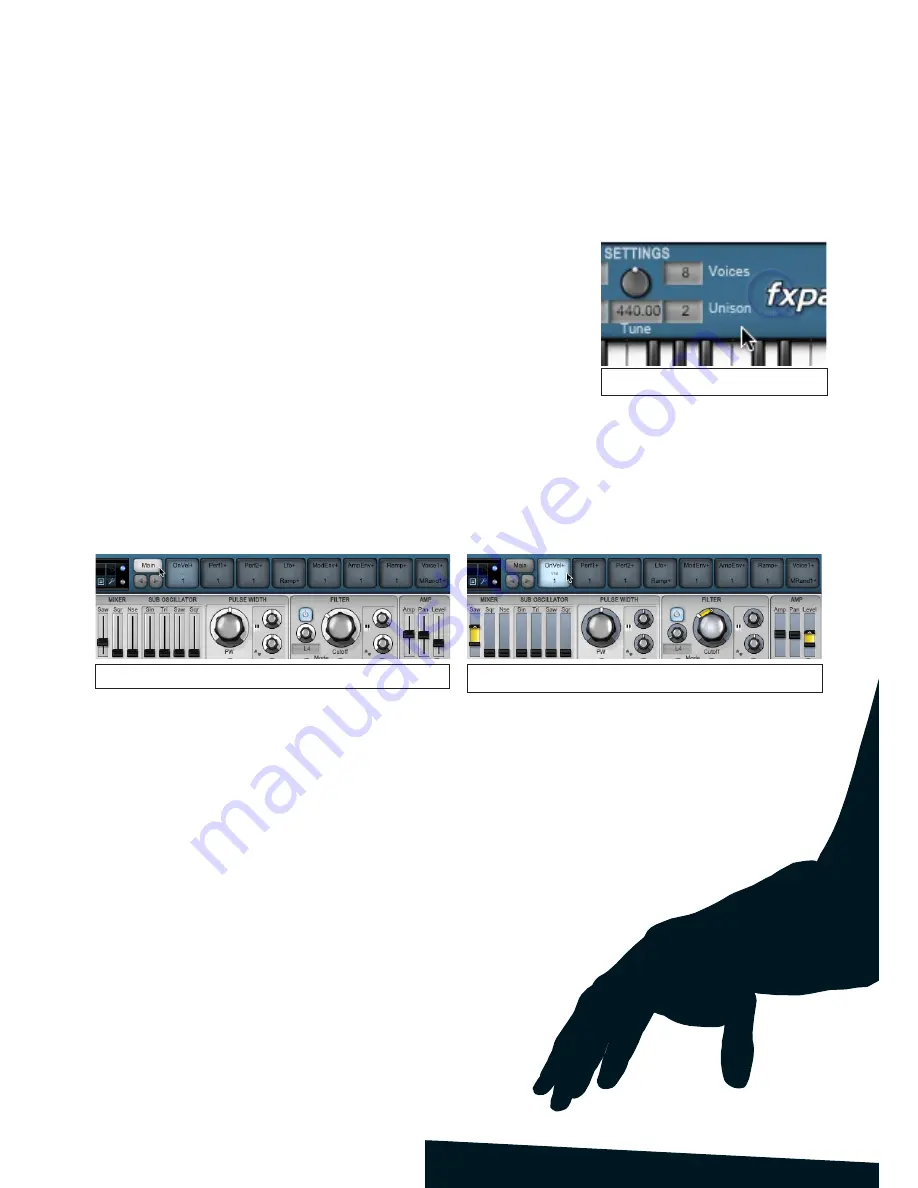
7
1:2 Shared aspects of all instruments
DCAM: Discrete Component Analogue Modelling
DCAM: Synth Squad has been built by accurately analysing and modelling real-world components and circuits found in
vintage analogue synths.
As a result, don’t expect a standard ‘clean VA’ sound from these synths – you would never get perfect waveshapes on a
real VCO-based analogue synthesizer.
What you can expect is a set of meticulously crafted synthesizer instruments that sound truly alive in a way that is very
rare in the digital world.
Voices, Unison voices and polyphony
Each of the synths within DCAM: Synth Squad features an identical approach to synth voices and unison.
These settings result in 4-note polyphony,
with each note being 2 stacked voices.
Strobe and Cypher feature a classic polyphonic architecture – to achieve 2 note
polyphony, for example, 2 whole monosynths are effectively played together at the
relevant pitches.
You can consider each of these ‘monosynths’ as a ‘voice’.
Additionally, you can set up ‘unison voices’ in order to stack more than 1 voice for
each note of polyphony. This is a classic technique used in analogue synthesis to
achieve huge, fat sounds.
Unison voices are taken from the total available voices. The total polyphony is:
voices ÷ unison voices
Amber’s architecture, like any classic string machine, is different to a classic polysynth. It provides 96 simultaneous notes
within a single voice. However, multiple voices can be used for programming more unconventional sounds.
TransMod modulation
Common between all the DCAM: Synth Squad instruments is the modulation architecture, called the TransMod system.
While there are some hard-wired modulation routings in the synths, you will need to use the TransMod modulation system
to perform more sophisticated synth programming functions.
By default, no TransMod slot is selected, and ‘Main’ is highlighted. In this state, only the initial values of parameters can be
adjusted.
First TransMod slot selected – controls can now set and display
modulation depths away from initial values.
Main view selected – only the initial value of all parameters is shown.
Clicking on one of the 8 TransMod slots changes the controls so that you can set a modulation depth on each of them.
Fusor includes a slight variant on the system called FuseMod, which allows various devices within Fusor, including synths,
to modulate each other. It operates in a very similar way to the TransMod system, and is described in section 8:8.
Performance controllers and MIDI Learn
DCAM: Synth Squad features a standardized system for manipulating parameters with MIDI controllers.
Performance controllers are designed to allow you to have access to your most immediate MIDI controllers across all
presets. Typical performance controls include Modulation Wheel, Aftertouch, Breath, Expression controllers and so on.
DCAM: Synth Squad also provides a MIDI Learn system, which allows you to map any MIDI CC# to any parameter.
Содержание DCAM SYNTH SQUAD
Страница 1: ......
Страница 2: ......
Страница 26: ...26 Shaper Filter Amp sections...
Страница 109: ......
Страница 110: ......








































